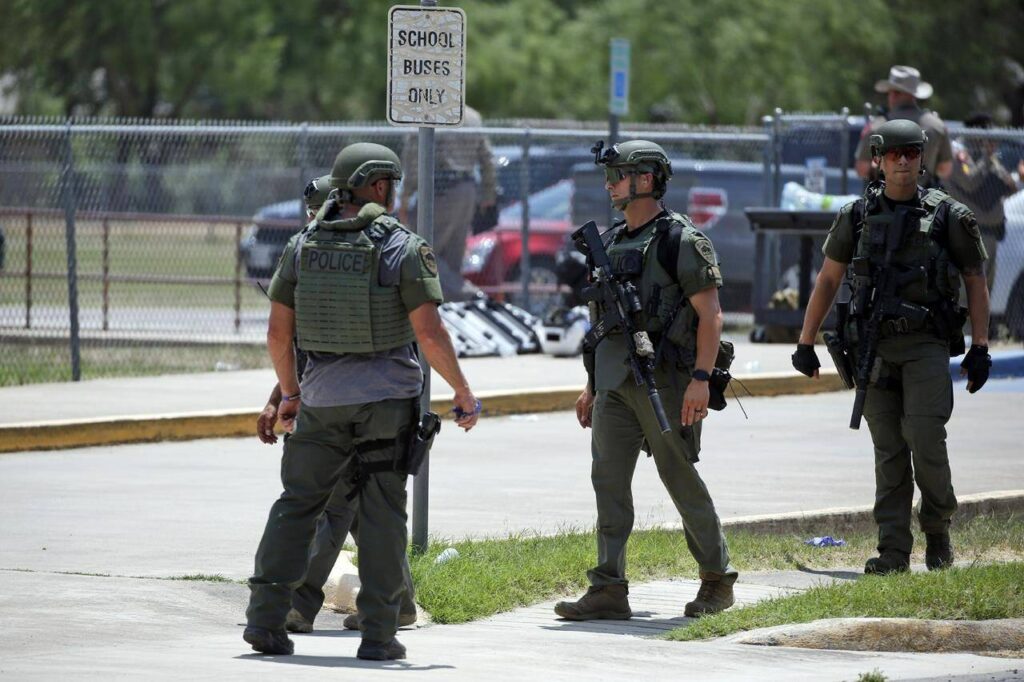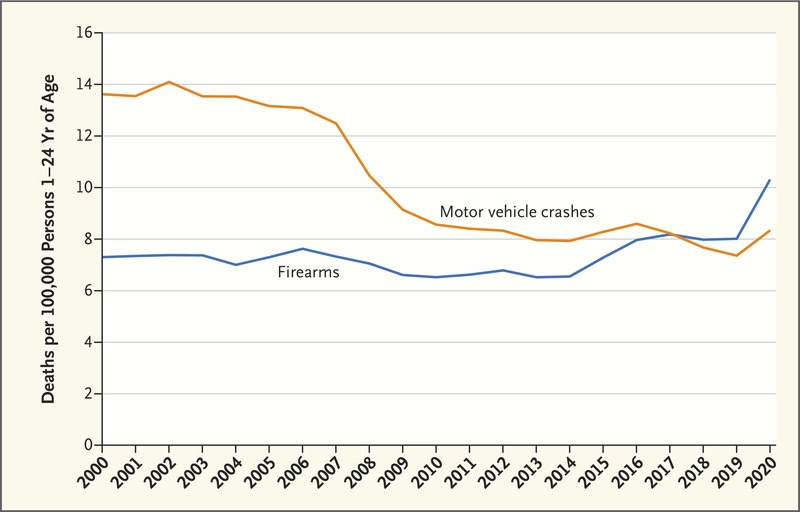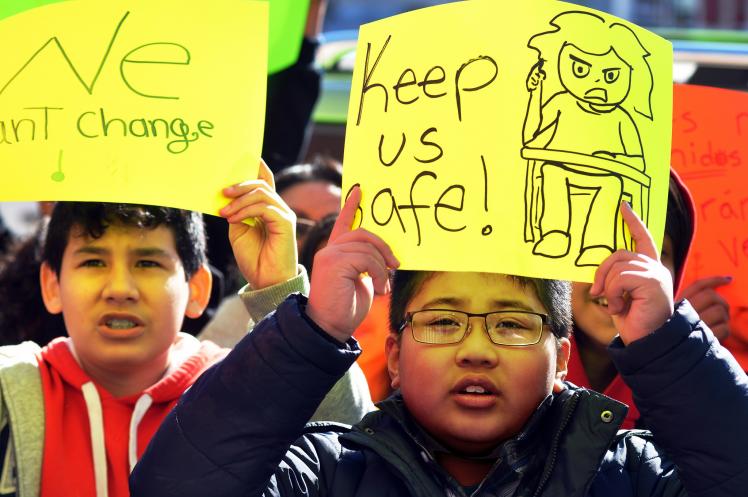
The 27th shooting in schools this year occurred at an elementary school in Uvalde, Texas, where 19 children and two adults were slain. The shooter in Tuesday’s events, according to Texas Governor Greg Abbott, was dead.
This is the bloodiest school massacre since 2012, when a gunman opened fire at Sandy Hook Elementary School in Newtown, Connecticut, killing 26 children as young as six years old. And the number of people killed was more than in the 2018 attack on Marjory Stoneman Douglas High School in Parkland, Florida, which left 17 people dead.
Robb Elementary educates kids in grades 2 through 4 in Uvalde, a predominantly Latino hamlet about 85 miles south of San Antonio.
This comes just ten days after ten people were killed in a shooting at a Tops supermarket in Buffalo, New York. Politicians, activists, the news media, and regular citizens frequently quote figures in the emotionally charged aftermath of school shootings, which can provide a skewed image of how many of these instances occur. These figures are used to stoke ongoing discussions about gun regulation, teacher arming, and school safety.
Inside the American Gun Culture
The United States is one of only three countries with a constitution that guarantees gun ownership. (The other two countries are Mexico and Guatemala.) The Second Amendment, which guarantees the right “of the people to keep and bear weapons,” was enacted in the 18th century to allow states to raise militias to defend themselves against federal despotism. The US Supreme Court concluded in 2008 that the amendment also protects individual gun rights. Aside from the legalities, gun culture in America has become a cultural icon in the U.S. Soldiers in the Revolutionary War and cowboys roaming the Wild West used it as a weapon.
Assault weapons, or semiautomatic rifles that shoot rounds in rapid succession, have recently acquired favour among both law-abiding gun owners and mass killers. Although less common, mass shootings in other countries have sparked debates about legislation. In early 2019, a massacre of 50 people at two mosques in New Zealand forced a change in the country’s gun regulations.
Accidents involving firearms are a common occurrence in the United States

Between 1968 and 2017, there were 1.5 million of them, which is more than the number of soldiers killed in any US combat since the American War for Independence in 1775.
More than 45,000 more Americans died at the end of a gun barrel in 2020 than in any other year on record, whether by homicide or suicide. The statistics indicate a 25% increase over the previous five years and a 43% increase over 2010.
However, the topic is a polarising one, putting proponents of gun control against others who are adamant about exercising their constitutionally protected right to keep and carry guns.
Political Aftermath
After lawmakers returned home from the 2019 legislative session, Texas was once again shocked by a racist attack at an El Paso Walmart, which killed 23 people and injured dozens more. At the time, the shooter informed authorities that he chose the spot because of its proximity to the border and that he was especially targeting Mexicans. He’s been charged with a federal hate crime, but he hasn’t been tried yet.
State leaders gathered hastily once more to consider alternative remedies.
A gunman killed seven people and injured 22 others while driving through Odessa and Midland a few weeks later before lawmakers could even offer comments.
Facts about School Shootings and Child-related Gun Violence
- Every day, 12 children in the United States die as a result of gun violence. Another 32 people have been shot and injured. 1
- Guns are the biggest cause of death among children and teenagers in the United States. One in every ten gun deaths is a person under the age of 19. 2
- In fact, the number of people killed by firearms is more than 5 times larger than the number of people killed by drowning.
- Since 1970, there have been 2,032 school shootings in the United States, and the number is rising. Since the tragedy at Sandy Hook Elementary School in December 2012, there have been 948 school shootings.
- School shootings have reverted to pre-COVID levels, if not escalated, according to some reports. According to studies conducted by the US Department of Homeland Security, we may avoid and reverse the trend of gun violence if we “know the indications.” 5
- Almost 300,000 pupils have been on campus during a school shooting since the tragic attack at Columbine High School in 1999.
How to Prevent School Shootings and Other Forms of Violence

- An estimated 4.6 million youngsters in the United States live in homes with at least one loaded and unlocked firearm. School shootings, suicides, and the deaths of family members, including infants and toddlers, have all been linked to carelessly stored guns.
- Nearly half of all parents with a gun in the house mistakenly assume their children are unaware of where the gun is kept.
- At least one other individual had knowledge of the attacker’s plan in four out of five school shootings but failed to disclose it.
- According to a study conducted by the Secret Service and the Department of Education, 93% of school shooters plotted their attacks in advance.
Gun Violence Prevention at the Community Level
Prevention of violence occurs along a continuum that begins in early childhood with programs to help parents raise emotionally healthy children and ends with efforts to identify and intervene with troubled individuals who are threatening violence. The mental health community must take the lead in advocating for community-based collaborative problem-solving models to address the prevention of gun violence. Such models should blend prevention strategies in an effort to overcome the tendency within many community service systems to operate in silos. There has been some success with community-based programs involving police training in crisis intervention and with community members trained in mental health first aid. These programs need further piloting and study so they can be expanded to additional communities as appropriate. In addition, public health messaging campaigns on safe gun storage are needed. The practice of keeping all firearms appropriately stored and locked must become the only socially acceptable norm.
What Works: Policies to Reduce Gun Violence.
This would have a huge impact on the U.S. arms industry, but the use of a gun greatly increases the odds that violence will lead to a fatality: This problem calls for urgent action. Firearm prohibitions for high-risk groups — domestic violence offenders, people convicted of violent misdemeanour crimes, and individuals with mental illness who have been adjudicated as being a threat to themselves or to others — have been shown to reduce violence. The licensing of handgun purchasers, background check requirements for all gun sales, and close oversight of retail gun sellers can reduce the diversion of guns to criminals. Reducing the incidence of gun violence will require interventions through multiple systems, including legal, public health, public safety, community, and health. Increasing the availability of data and funding will help inform and evaluate policies designed to reduce gun violence.
 www.GunsandOptics.com Tactical & Hunting Gear Review
www.GunsandOptics.com Tactical & Hunting Gear Review